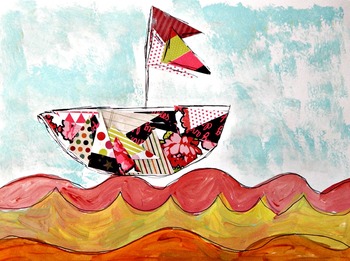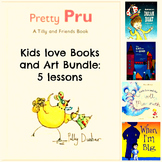- PDF
Also included in
- Are you looking for creative ways to engage your students while incorporating art and literature into your curriculum? Look no further! We have compiled a list of 5 art projects that can be integrated with books featuring silly birds, circus themes, underwater themes, sailboat themes, and city themePrice $5.99Original Price $9.50Save $3.51
Description
Unlock your students' creativity and ignite their imaginations with our captivating art project designed to accompany the beloved children's book, "Arthur's Dream Boat." This enchanting project will not only bring the story to life but also provide three incredible ways to seamlessly integrate it into your elementary classroom. Let's dive in!
Visual Storytelling:
Invite your students on a magical journey as they recreate scenes from "Arthur's Dream Boat" through art. This project encourages children to express their understanding of the story visually, helping them develop essential storytelling skills. Whether it's capturing Arthur's dreams or illustrating the fascinating creatures he encounters, this art activity empowers your students to unleash their imagination and create their own unique interpretations.
Character Exploration:
Engage your students in an in-depth exploration of the characters in "Arthur's Dream Boat" through art. Encourage them to delve deeper into the personalities, emotions, and motivations of Arthur and his companions. By sketching, painting, or crafting the characters, children can delve into the psychology of storytelling and enhance their understanding of character development. This hands-on approach to literature promotes empathy, critical thinking, and artistic expression.
Collaborative Seascape:
Immerse your entire class in a collaborative project inspired by the vibrant seascapes depicted in the book. Transform your classroom into a lively art studio, where students work together to create a breathtaking mural or a three-dimensional installation that captures the essence of the story's setting. This collaborative art experience fosters teamwork, communication, and a sense of shared accomplishment, while also allowing each student to contribute their unique artistic touch.
Why Choose Our "Arthur's Dream Boat" Art Project?
✅ Curriculum Integration: Seamlessly integrate art with language arts, fostering a well-rounded learning experience.
✅ Enhances Creativity: Encourages imaginative thinking and artistic expression in a fun and engaging way.
✅ Cross-Curricular Connections: Promotes connections between art, literature, and social-emotional learning.
✅ Suitable for All Skill Levels: Adaptable for various grade levels, ensuring inclusivity and individual growth.
✅ Inspires Collaboration: Encourages teamwork, communication, and a sense of community among students.
What Teachers are saying:
-Thanks for introducing me to this wonderful book. We used this great activity as a jumping off point for lots of other activities, including building a kid size boat in the classroom and the kids used patchwork paper to decorate the outside!
Make sure to click the GREEN STAR near my store name so that you can stay in touch with my store. I create new lessons every week.




